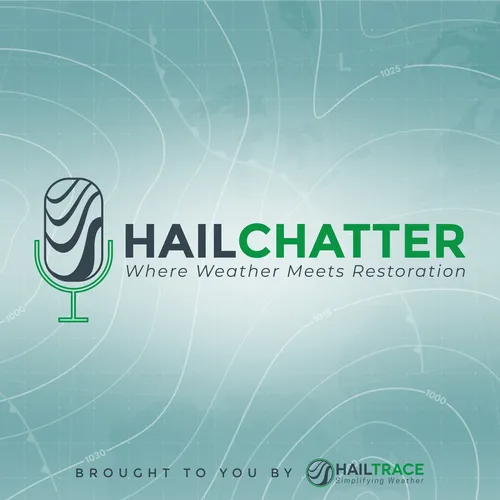Storm Chasing By Plane? The Wild Ride With Hurricane Hunters | S2 E2 | HailChatter | HailTrace
- Author
- HailTrace
- Published
- Wed 13 Aug 2025
- Episode Link
- https://podcasters.spotify.com/pod/show/hail-chatter/episodes/Storm-Chasing-By-Plane--The-Wild-Ride-With-Hurricane-Hunters--S2-E2--HailChatter--HailTrace-e36qllo
What’s it like to fly into powerful storms—sometimes at night—with lightning flashing all around you? Dr. Dan Stechman, a Meteorological Software Engineer at HailTrace, shares what it’s really like inside NOAA’s Hurricane Hunter aircraft.
From flying through massive nighttime thunderstorms to capturing tornado data from the air, Dan breaks down the science behind these missions—and why it matters to everyone.
👉 Like, subscribe, and share this with someone who loves crazy weather and restoration insights.
Chapters
(00:00 - 01:19) What is it like to fly on a NOAA hurricane hunter plane?
(01:19 - 02:40) Why would a scientist fly into a nighttime thunderstorm?
(02:40 - 05:24) How do hurricane hunter planes work and are they safe?
(05:24 - 06:50) What have PECAN and TORUS taught us about tornadoes?
(06:50 - 07:45) Why can’t radars see what’s happening near the ground?
(07:45 - 08:41) Who’s onboard a hurricane hunter flight?
(08:41 - 11:55) What’s it like to see a tornado from the air?
(11:55 - 16:30) How do NOAA scientists prepare for dangerous flights?
(16:30 - 22:28) How did NOAA’s hiring freeze change meteorology careers?
(22:28 - 29:06) Why does losing weather balloon launches matter?
(29:06 - 30:23) Why does NOAA’s data matter for everyone?
WANT MORE WEATHER?! Subscribe for more!
X: https://twitter.com/HailTraceInstagram: https://www.instagram.com/hailtrace
TikTok: https://www.tiktok.com/@hailtrace
Facebook: https://www.facebook.com/HailTrace/
YouTube: https://www.youtube.com/@HailTrace#HurricaneHunter
#SevereWeather #Stormchasing #HailTrace #ExtremeWeather #Tornado
